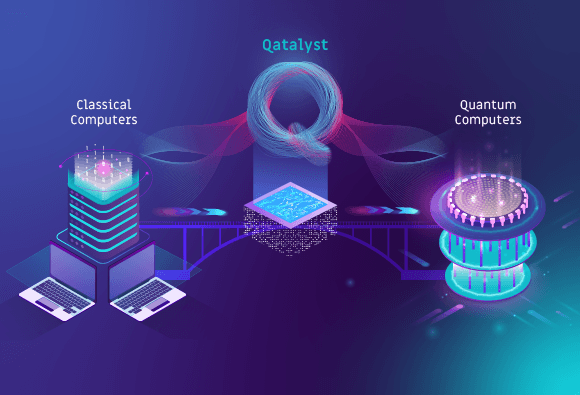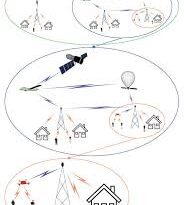Erik Hosler Talks About Hybrid Quantum-Classical Architectures in Semiconductor Fabs
As the semiconductor industry embraces quantum computing’s potential, integrating quantum and classical architectures within fabrication facilities is becoming increasingly important. These hybrid systems are designed to leverage the strengths of both computing paradigms, offering improved data processing and enhanced control mechanisms. Erik Hosler, a visionary in semiconductor innovation, recognizes the importance of combining quantum and classical technologies to maximize computational efficiency. Developing hybrid architectures that seamlessly integrate into existing fabs presents unique challenges and opportunities.
Hybrid quantum-classical architectures aim to balance the speed and power of quantum processing with the reliability and control of classical systems. As researchers explore practical implementations, the focus is on achieving coherent interaction between qubits and classical control circuits. Building these architectures within semiconductor fabs requires a detailed understanding of both quantum dynamics and classical integration techniques.
The Rationale Behind Hybrid Architectures
Hybrid quantum-classical systems are designed to address the limitations of purely quantum approaches by incorporating classical control elements. Quantum processors excel in parallel computation, but maintaining coherence during complex operations remains challenging. Classical systems, known for their stability, provide essential error correction and control functions that support quantum tasks.
Integrating these architectures within semiconductor fabs allows for streamlined data management and enhanced computational accuracy. The ability to switch seamlessly between quantum and classical modes is crucial for applications where both types of processing are needed. For example, data decryption tasks can benefit from quantum speed while relying on classical validation processes.
Balancing Quantum and Classical Control
One of the primary challenges in developing hybrid architectures is managing the interaction between qubits and classical circuits. Qubits, sensitive to noise and thermal fluctuations, require precise environmental control. Classical circuits, however, generate heat and Electromagnetic Interference (EMI), potentially compromising qubit coherence.
Engineers are experimenting with isolation techniques that shield qubits from classical disturbances while allowing efficient data transfer. By using low-power CMOS-based control circuits, researchers aim to reduce noise while maintaining effective signal transmission. This approach supports the delicate balance needed for hybrid processing environments.
Achieving efficient integration between classical and quantum systems requires strategic approaches that balance stability and performance. Erik Hosler stresses, “Quantum computing relies on both quantum and classical technologies, and CMOS provides the critical infrastructure bridge needed to manage and control quantum systems.” His insight highlights the necessity of harmonizing classical and quantum technologies to achieve stable hybrid architectures.
Challenges in Hybrid System Design
Building hybrid quantum-classical architectures in semiconductor fabs presents significant engineering challenges. One major issue is temperature management. Quantum devices typically operate at cryogenic temperatures, while classical circuits function in ambient conditions. This temperature disparity requires innovative cooling solutions that maintain qubit stability without compromising classical performance.
Another challenge is the synchronization of processing speeds. Quantum calculations occur at a fundamentally different rate than classical computations. Integrating both systems without introducing latency or data mismatches is essential for maintaining computational coherence.
Optimizing Hybrid Systems for Scalability
To ensure that hybrid quantum-classical systems are practical at scale, researchers are focusing on modular design approaches. Modular architectures allow individual components to be optimized independently, improving both scalability and maintenance. By isolating classical control circuits from quantum processors, engineers can more easily update or replace specific elements without disrupting the entire system.
Using advanced fabrication techniques, such as 3D stacking, also enhances scalability. By vertically integrating quantum and classical components, fabs can reduce the physical footprint while maintaining high-density processing capabilities. This compact design is especially beneficial for applications requiring rapid data transfer between quantum and classical layers.
Another focus is power optimization. Developing low-energy CMOS interfaces that can operate at cryogenic temperatures helps reduce power consumption, making hybrid systems more efficient. Researchers are also exploring energy recovery techniques to repurpose excess heat generated by classical circuits, further stabilizing the system’s thermal profile.
Emerging Solutions and Fabrication Techniques
To address these challenges, researchers are developing layered architectures where quantum and classical components are physically separated but electronically linked. This spatial separation helps reduce thermal crosstalk while maintaining signal integrity. Innovations in 3D stacking allow for more compact hybrid systems, making them suitable for modern semiconductor fabs.
Material choice also plays a critical role. Using low-resistance superconducting links between quantum and classical layers minimizes energy loss. Engineers are also exploring high-purity silicon substrates that reduce defect density, thereby enhancing qubit fidelity. Combining these materials within a single fabrication process helps streamline hybrid device production.
Real-World Applications and Industry Relevance
Hybrid quantum-classical architectures are poised to impact various industries. In materials science, these systems can perform advanced simulations of molecular interactions, blending quantum accuracy with classical processing power. In finance, hybrid architectures accelerate optimization algorithms, balancing rapid data analysis with structured data management.
Telecommunications applications also benefit, as hybrid systems can enhance signal encryption by integrating quantum key distribution with classical verification methods. By employing both paradigms, communication networks achieve higher security standards while maintaining data flow consistency.
Healthcare applications are also emerging. Hybrid processors can enhance the analysis of complex medical data by combining quantum speed with classical accuracy. This approach can improve diagnostic precision, particularly in genomics and predictive healthcare modeling.
Collaboration and Standardization Efforts
Bringing hybrid architectures into mainstream semiconductor production requires collaboration among research institutions, fabrication operators and technology developers. Establishing common standards for interface protocols and thermal management practices can support wider adoption. Joint research initiatives focus on creating modular designs that can be easily adapted to different fabrication environments.
Companies are also developing standardized control modules that integrate with quantum and classical systems. By focusing on modularity, manufacturers can easily create configurable hybrid components, reduce development time and enhance scalability.
The Future of Hybrid Quantum-Classical Systems
Hybrid architectures represent a practical path toward scalable quantum computing. By integrating classical control mechanisms, these systems enhance reliability without sacrificing processing speed. As fabs continue to adapt to quantum-classical integration, the potential for more efficient, versatile computing platforms becomes increasingly clear.
The semiconductor industry’s commitment to hybrid development underscores the importance of balancing innovation with practicality. As researchers refine these architectures, the ability to deploy hybrid systems on a large scale can shape the next generation of computational technologies, offering new possibilities for data processing and system integration.




